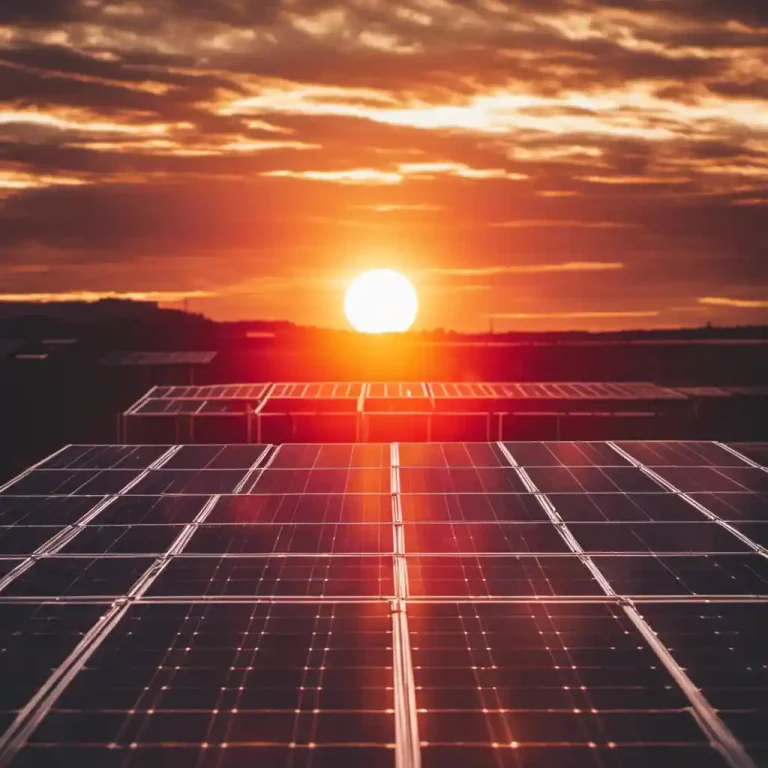Introduction to Solar Energy
Solar energy is the radiant energy emitted by the sun that is harnessed using a range of technologies like solar heating, photovoltaic cells, and others. It is a renewable and abundant source of power and has huge potential for use in generating electricity and providing energy solutions worldwide.
Understanding How Solar Energy Works
You may ask, how does solar energy work? Let’s break it down.
See also: What is the Future of Solar Energy? Revolutionizing Sustainable Living
Overview on Photovoltaic Basics
Photovoltaic (PV) essentially means that it generates electricity from sunlight. It’s the technology that allows solar panels to take sunlight—photons—and convert it into electricity—voltage.
Photovoltaic solar cells contain a semiconductor material (commonly silicon-based) that absorbs sunlight. This absorption pumps up the energy of the cell’s electrons, which then generate electricity.
See also: Best Place for Solar Panels in the World: A Comprehensive Guide
Concentrating Solar-Thermal Power Basics
Here, sunlight is focused onto a small area to produce heat. The heat then drives a heat engine (a thermodynamic device that converts heat into mechanical energy) connected to an electric power generator.
See also: When Was Solar Energy Invented? Discover the History of Solar Power
Solar Energy Systems Integration Basics

This process combines different elements of solar power, like placing a battery storage system with a PV system, to create maximum energy efficiency.
See also: How is Solar Energy Produced? A Comprehensive Guide to Understanding the Process
Is Solar Energy Renewable?
Put simply, is solar energy renewable? Yes, it absolutely is. Solar energy is a renewable resource, meaning that it won’t run out and we can keep using it over and over again. The sun is an incredible energy source. Even with half the Earth in shadow at any given time, and even with clouds and bad weather, the sun still sends down more than enough energy to meet our power needs.
See also: What is Passive Solar Energy? A Comprehensive Guide to Sun-Powered Efficiency
In-depth on Solar Power
So, you ask, what is solar power and how does it relate to solar energy?
See also: How Does Solar Energy Travel to Earth? An In-Depth Exploration
What is Solar Power
Solar power is just the conversion of energy from sunlight into electricity, directly using photovoltaics or concentrated solar power.
See also: What Happens to Solar Energy Inside the Greenhouse? Unveiling the Mysteries
Differences between Solar Power and Solar Energy
Solar power utilizes solar energy, but not all solar energy produces solar power. Solar energy can be used for heat or to produce electricity (solar power). In essence, solar power is a way of harnessing solar energy.
See also: Is Solar Energy Renewable? (Power Compared)
Solar Energy and its effects on Earth

“What is solar energy and how does it affect Earth?” you might ponder. To begin with, solar energy helps us limit our carbon footprint by reducing greenhouse gas emissions. It’s one of the key solutions in combating climate change and promoting a more sustainable future.
Solar energy is a cleaner alternative to fossil fuels. Its use implies the reduction of water pollution and helps to preserve natural resources.
See also: What Is Solar Energy Used For? (Power – Heat – Light)
The Uses of Solar Energy
It’s interesting to note what solar energy can do. From providing power for spacecraft to heating water – solar energy is versatile. Solar-powered vehicles, lightings, and even solar-powered clothes have come to exist. Solar energy also has great potential to power desalination plants, provide emergency power systems, and more.
Dive Deeper into the Applications of Solar Energy through this link.
Solar Energy as Radiation
Yes, solar energy is radiation. We receive solar energy in the form of light and heat which are forms of radiation.
What is Solar Radiation
Solar radiation might sound ominous, but it’s simply a term for the electromagnetic light waves that the sun sends out. It includes visible light, which we see as sunshine, ultraviolet light, and infrared light, which we feel as heat.
Solar Radiation Measurement
Scientists quantify solar radiation using devices like the pyranometer for determining the solar irradiance on a given area, or the spectroradiometer for examining the solar spectral irradiance.
Different Types of Solar Radiation

There are three primary types of solar radiation: ultraviolet, visible light, and infrared. The UV radiation, although it comprises just a small portion of the solar radiation spectrum, has significant effects on human health. Visible light is primarily alleged for photosynthesis in plants, and infrared heat keeps our planet habitable.
How Solar Energy is Transferred to Earth by Radiation
Now you might wonder why is solar energy transferred to Earth by radiation? This is simply because of the vastness of space between the Sun and Earth, with no matter to help the transfer of energy. Hence, solar energy is transferred in the form of electromagnetic waves, known as radiation.
Differentiating Solar Radiation and Thermal Energy
Lastly, what is the difference between solar radiation and thermal energy?
Definition and Characteristics of Thermal Energy
Thermal energy refers to the internal energy of an object due to the kinetic energy of its atoms and molecules. It results from the sun heating the earth unevenly, causing temperature differences, which turns into kinetic energy.
Comparing Solar Radiation and Thermal Energy
While solar radiation makes up all the energy coming from the sun (visibly or as heat), thermal energy refers specifically to the heat energy. In essence, heat is the aftermath – it’s the energy transferred that results from the movement of charged particles in the atoms.
Let’s put this into everyday context. When sunlight (solar radiation) hits the driveway, the heat you feel if you walk barefoot on it is the thermal energy being transferred to your feet!
For more exciting details about solar energy, check out Solar Energy Facts and Solar Energy Statistics.
Understanding solar energy as thoroughly as we do now, there’s no wonder why it’s hailed as the answer to our quest for sustainable, green energy. So, as we continue to innovate and discover new ways to harness the sun’s power, remember every glint of sunlight is filled with potential and opportunity.
That my friends, is the power of understanding what solar energy is and its amazing potential in changing our world.



